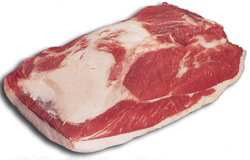
Sirloin (Top)
The top sirloin consists of the Top Sirloin and the Top Sirloin Cap or Culotte together they are known as the Top Sirloin Butt. The sirloin is in between the saddle or short loin and the rump leading into the round. The culotte (sirloin cap) is actually more triangular than the tri-tip.
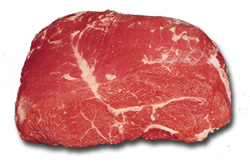
Many times you will find coulotte steaks cut from the tri-tip but a true coulotte is from the top sirloin cap and pound for pound it is one of the tastiest pieces there is in my opinion, but get one and decide for yourself- I'll bet you'll enjoy it for sure. You can also break down the center cut sirloin (cap removed) into baseball steaks that resemble tenderloin steaks in size and shape.
Sirloin Notes: " The sirloin is near the rump, so the meat's a bit tougher than cuts from the loin or the rib. There are several different sirloin steak cuts, named for the shape of the hip bone that's left in them. Going from fore to aft, there's the tender but bony pin bone sirloin, which is right next to the Porterhouse on the carcass, the flat bone sirloin, the round bone sirloin, and finally the wedge bone sirloin, which is closest to the rump and therefore least tender. A boneless sirloin steak is sometimes called a rump steak = butt steak. Sirloin steaks are usually grilled or broiled. Don't overcook them or they'll lose much of their flavor."
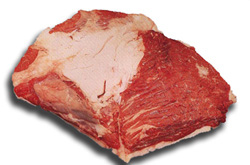
Sirloin (Bottom)
The bottom sirloin lies between the butt end of the tenderloin and the knuckle in the round and consists of three separate muscles- the Bottom Sirloin Flap(often called Bavette), the Tri-Tip or Triangle, and theBall Tip. The names for what is usually called Tri-Tip vary from Santa Maria Barbeque to Knuckle Cap. Most names though, including it's Spanish name 'punta en triangulo', refer to its triangular shape.
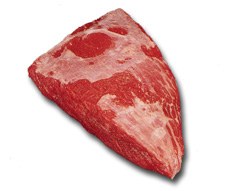
The Sirloin Myth
There is a story that has circulated indicating that sirloin received its name when king Henry VIII was so delighted with this primal of beef that he knighted it "Sir Loin". While this makes for an amusing story the reality is that the word sirloin is a corruption of the French sur meaning 'on top of' or 'above the loin or sirloin as we know it today. This cut was thus named not because it was royal but because of its location!
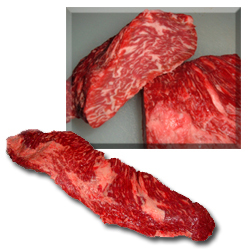
It is of some interest that as the story goes the tri-tip was first popularized in NYC by the late master butcherJack Ubaldi at the Florence Prime Meat Market. According to Mr. Ubaldi he first started cutting steaks from from the triangle or tri-tip and because the piece looked like the triangle on a box of Newport cigarettes he called them Newport steaks. Regardless, the tri-tip has become all but lost on the East Coast but has become a West Coast phenomenon. In the summertime you will not find an outdoor grill devoid of one from Seattle to San Diego.
The bottom sirloin flap, usually called bavette in restaurants and bistros resembles the flank as it actually is a continuation of it, except about twice as thick. The grain is usually fairly large but well marbled and if grilled, rested, and sliced against the grain you will be pressed to find a more satisfying beef eating experience albeit an elbows on the table rustic one. Many times this cut is used in Mexican cuisine as Steak Ranchera.
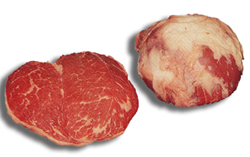
The Ball Tip is the muscle that is left on the bottom sirloin after removing the tri-tip and the flap and is a small rounded portion of the larger muscle group called the knuckle and it's called the ball tip well, because it looks like a ball and it's the tip of that muscle group that goes into the round. This is a tasty little roast or it can be cut into steaks, sometimes marketed as Petite Sirloin or Sizzler Steaks. In between a tough and tender cut the ball tip benefits from marinating, searing hot and finishing slow and resting. Very flavorful!
Sirloin Note: Many have the misconception that because it's from the sirloin it is going to be super tender. Remember where these muscles are at- behind and below the loin leading into the round where the major locomotive muscle groupings are. The sirloin tends to be a little toothier than loin cuts and depending where in the sirloin they are located, for example the top sirloin, perhaps a bit leaner. But the trump card for the sirloin is that it is full of flavor, so handled properly perhaps some of the best value/quality ratio on the steer.
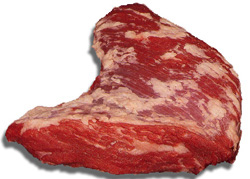
Try the various sirloin offerings we have from our heritage Angus beef program, raised without the use of added hormones or antibiotics!
 BACK
BACK